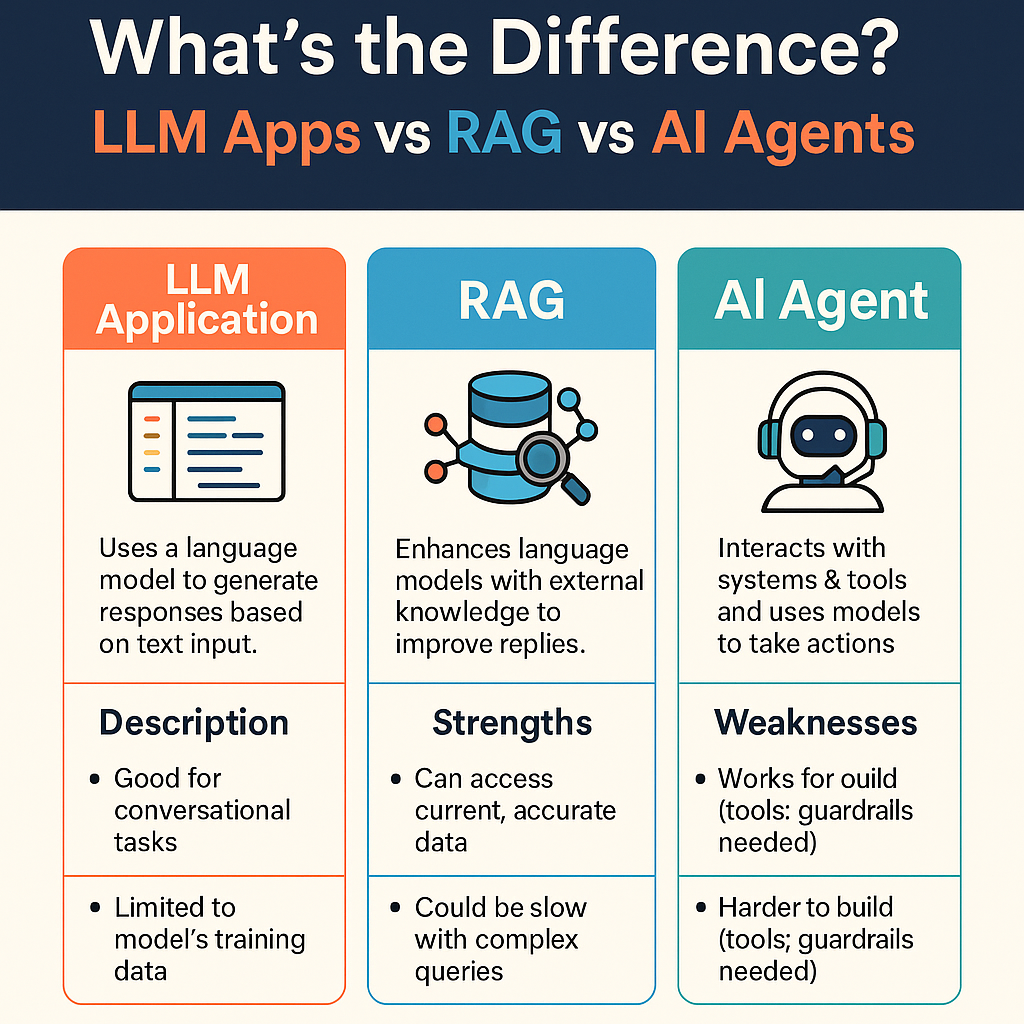In the landscape of artificial intelligence (AI), various models serve distinct purposes, each contributing unique capabilities to the field. Large Language Models (LLMs) like GPT and Retrieval-Augmented Generative models (RAG) have made significant strides in natural language processing, excelling in understanding and generating text based on input. However, while these models are proficient in linguistic tasks, they fall short when it comes to real-world action and interaction. This limitation underscores the necessity of AI agents, which are designed to perform tasks and take actions in response to the information they process.
Large Language Models (LLMs) and Retrieval-Augmented Generative models (RAG) have garnered attention for their remarkable abilities in understanding and generating text. These models, trained on vast amounts of textual data, can generate human-like responses and incorporate external knowledge sources through retrieval mechanisms, as seen in RAG models. However, despite their prowess in linguistic tasks, LLMs and RAG models lack the capability to extend beyond text generation and interact with the real world.
AI agents, in contrast to LLMs and RAG models, are purpose-built for real-world interaction. These agents possess the ability to perceive their environment, make decisions, and execute actions autonomously or semi-autonomously. Whether it’s scheduling appointments, managing smart home devices, or providing customer support, AI agents are designed to perform tasks and take actions based on the information they gather.
While LLMs and RAG models excel in processing and generating text, their limitations become apparent when tasked with real-world actions and interactions. Real-world scenarios often require not only understanding natural language input but also making decisions, executing tasks, and responding dynamically to changing conditions. This disparity underscores the need for complementary systems that can bridge the gap between linguistic understanding and real-world execution.
Tasks and actions in the real world necessitate a combination of decision-making processes, task execution, and real-time interaction. From navigating complex environments to responding to user queries in customer service, these tasks demand more than just linguistic proficiency. They require the ability to analyze information, make decisions based on context, and interact with users or systems in real-time.
While LLMs and RAG models offer significant advancements in natural language processing, they lack the capacity for decision-making inherent to AI agents. Decision-making processes are integral to real-world tasks, involving the analysis of information, consideration of various factors, and subsequent action. This capability distinguishes AI agents as essential components for addressing tasks requiring complex decision-making.
Decision Making: AI agents often involve decision-making processes based on predefined rules, machine learning algorithms, or reinforcement learning techniques. They analyze information, consider various factors, and make decisions accordingly. LLMs and RAG models, while capable of generating text based on input, don’t inherently possess decision-making capabilities in the same way AI agents do.

Moreover, real-time interaction is a critical aspect of many applications, demanding dynamic responses and swift action. AI agents are tailored for such scenarios, operating in real-time or near real-time to interact with users or systems dynamically. In contrast, while LLMs and RAG models can generate responses, they may not always meet the real-time requirements of interactive applications.
Real-time Interaction: AI agents typically operate in real-time or near real-time scenarios, interacting with users or systems dynamically. They need to process input, generate responses, and perform actions within short time frames. LLMs and RAG models can generate responses, but they may not always meet the real-time requirements of interactive applications.
Therefore, the limitations of LLMs and RAG models underscore the importance of AI agents in addressing tasks that require real-world action and interaction. By incorporating decision-making algorithms, task execution mechanisms, and real-time interaction features, AI agents complement the capabilities of LLMs and RAG models, enabling a more comprehensive and effective approach to solving real-world challenges.
Thus, AI agents complement LLMs and RAG models by providing the necessary capabilities for real-world task execution, decision-making, and real-time interaction. By integrating these components, a more comprehensive and effective system can be achieved, leveraging the strengths of both approaches to address a wider range of tasks and challenges.
In summary, the combination of LLMs, RAG models, and AI agents creates a synergistic effect, enhancing the capabilities of each component and resulting in more intelligent and capable systems. While LLMs and RAG models excel in linguistic understanding and generation, AI agents are indispensable for tasks requiring real-world action, decision-making, and dynamic interaction.

